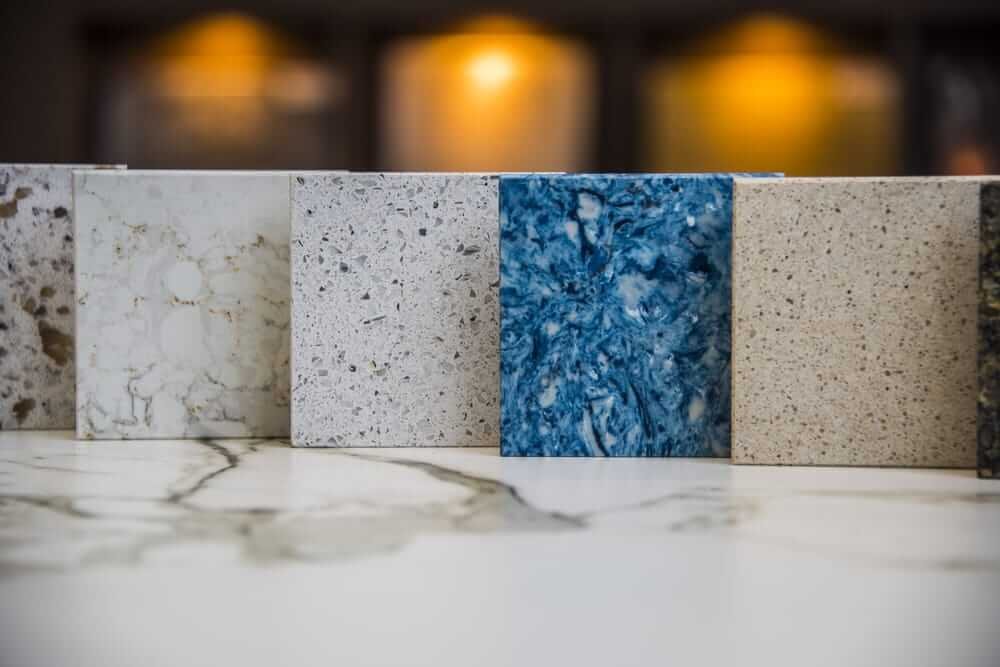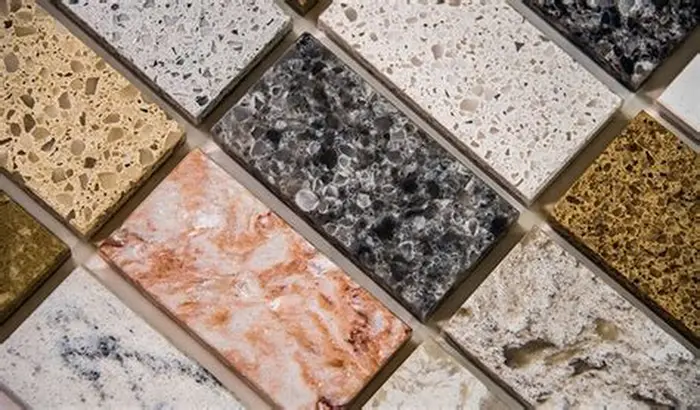Quartz countertops have become a staple in modern kitchen and bathroom design due to their durability, sleek aesthetics, and minimal maintenance. But have you ever wondered how these elegant surfaces are actually made?
Unlike natural stone slabs, quartz countertops are engineered stone countertops—crafted through an advanced manufacturing process that transforms raw quartz into one of the most durable and beautiful materials available for residential and commercial use.
In this guide, we’ll walk you through the step-by-step process of making quartz countertops, from raw material to finished slab, and explore why these surfaces are in such high demand across the world.

What Are Quartz Countertops?
Before diving into the production process, it’s important to understand the basics. Quartz countertops are made from a combination of around 90–95% crushed natural quartz and 5–10% polymer resins, binders, and pigments. This mixture creates a non-porous, hard, and stain-resistant surface perfect for modern interiors.
Whether you’re considering white quartz countertops, grey quartz countertops, or marble look quartz countertops, these slabs provide a consistent pattern and color, unlike the natural variation found in granite or marble.
👉 Learn more: What Are Quartz Countertops?

Step-by-Step: How Quartz Countertops Are Made
1. Raw Material Sourcing
The process begins with the mining of natural quartz—a common mineral found in sand, rock, and other geological formations. The quartz crystals are extracted, sorted, and shipped to manufacturing facilities.
- Sourced globally from countries like the U.S., Brazil, and India
- Must be pure, hard, and free of contaminants
2. Crushing and Blending
Once at the facility, the quartz is crushed into different granular sizes. This allows manufacturers to create various textures and patterns, including veined quartz countertops and marble-look styles.
The crushed quartz is then mixed with:
- Polymer resins for binding
- Pigments for coloration
- Optional additives like mirror chips or glass for sparkle
3. Molding and Compacting
The blended mixture is poured into molds to form the shape of quartz slabs for countertops. These molds are then subjected to:
- Vacuum compression: Removes air pockets
- Vibration and compaction: Densifies the mixture
This step ensures that the slab is uniformly dense and free from weak spots—vital for long-term durability.
4. Curing Process
The slab is then placed into a kiln or industrial oven and baked at high temperatures (up to 200°F/93°C). This heat cures the resin, bonding all components into a solid surface.
The result: A tough, stable, and non-porous slab ready for finishing.
5. Polishing and Surface Finishing
After cooling, slabs undergo multi-stage polishing, achieving high-gloss, matte, or textured finishes depending on the design.
Popular finishes include:
- Polished (shiny and reflective)
- Honed (soft matte)
- Leathered (textured feel)
This stage is where Calacatta quartz countertops or black quartz countertops reveal their final beauty.
6. Quality Inspection and Fabrication
Each slab is inspected for imperfections, warping, and surface consistency before being shipped to quartz countertop showrooms or fabricators.
Custom fabricators then cut the slab to fit:
- Kitchen countertops
- Bathroom vanities
- Islands, backsplashes, and more
Want to DIY? Learn about safe Material-handling Equipment before handling slabs.
Quartz vs Granite Countertops: Manufacturing Differences
| Feature | Quartz Countertops | Granite Countertops |
|---|---|---|
| Source Material | Engineered from quartz and resins | 100% natural stone |
| Pattern | Uniform and consistent | Naturally varied |
| Porosity | Non-porous (no sealing needed) | Porous (requires sealing) |
| Maintenance | Low | Moderate |
| Heat Resistance | Moderate | High |
👉 Related Reading:
How Much Are Quartz Countertops per Square Foot?
How Much to Install Quartz Countertops?
Pros and Cons of Quartz Countertops
✅ Pros
- Scratch and stain resistant
- No sealing required
- Wide variety of colors and patterns
- Ideal for budget quartz countertops
- Perfect for low maintenance quartz countertops for busy families
❌ Cons
- Sensitive to high heat
- Can be more expensive than some granites
- Not suitable for outdoor installations
Are Quartz Countertops Worth It?
Absolutely. Whether you’re designing quartz kitchen countertops or quartz bathroom countertops, you’re getting a long-lasting, visually striking, and hygienic surface.
They are especially ideal for:
- Affordable white quartz countertops for modern kitchens
- Best types of quartz countertops for bathroom vanities
- Homeowners seeking custom quartz countertop installers or considering DIY quartz countertop installation tips
Where to Buy Quartz Countertops
Look for these options:
- Quartz countertops near me (use local supplier directories)
- Local quartz countertop suppliers
- Online stores with delivery options
- Quartz countertop showrooms for hands-on slab selection
Final Thoughts
So, how are quartz countertops made? Through a highly controlled manufacturing process that combines raw quartz with resins and pigments, molded, cured, and polished to perfection.
The result is a surface that rivals natural stone in appearance while surpassing it in practicality. Whether you love the pristine look of white quartz or the sophistication of veined quartz countertops, engineered quartz offers a blend of performance, beauty, and reliability that few materials can match.

